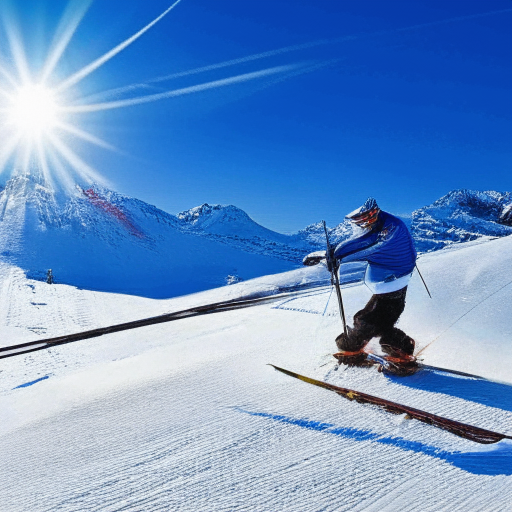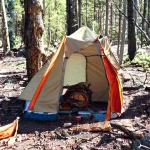Safeguard Your Eyesight: An In-Depth Exploration of Snow Blindness and How to Prevent It
As we embrace the enchanting winter season, characterized by its breathtaking snow-covered landscapes, it’s crucial to recognize the inherent risks that accompany outdoor activities in these dazzling environments. One of the most pressing threats to our eye health is snow blindness, a temporary yet painful condition resulting from excessive exposure to ultraviolet (UV) rays reflected off the snowy terrain. This detailed guide delves into the complex science behind snow blindness, examines how sunlight interacts with snowy surfaces, and offers practical strategies for prevention, accurate identification, and effective treatment. By understanding the causes and implementing protective measures, we can enjoy the majestic beauty of winter while keeping our vision safe and healthy.

Comprehending the Medical Terminology and Origins of Snow Blindness
The formal medical term for snow blindness is photokeratitis, which signifies a temporary injury to the cornea, the eye’s outermost protective layer. This distressing condition primarily develops due to prolonged exposure to high levels of ultraviolet (UV) radiation, particularly the rays that bounce off snow-covered surfaces. The intense sunlight, especially at elevated altitudes where the atmosphere is thinner, can lead to significant discomfort and may, in some cases, result in lasting vision problems. While snow blindness typically resolves on its own within a short time frame, gaining a thorough understanding of its underlying causes is essential for implementing effective prevention and management strategies that protect your vision.
Analyzing the Impact of Sunlight on Snowy Environments and Its Effects on Vision
To truly grasp the complexities of snow blindness, it’s important to investigate how sunlight interacts with the snow’s surface. Sunlight travels through the atmosphere and includes a range of wavelengths, some of which can be harmful, such as ultraviolet radiation. When these rays hit a snow-covered landscape, the unique reflective characteristics of snow can bounce back as much as 80% of these UV wavelengths, significantly increasing exposure. This effect is even more pronounced in higher altitudes, where the atmospheric filtering against UV radiation is less effective. Consequently, the eyes can quickly become overwhelmed by excessive UV exposure, leading to potential damage to critical eye structures such as the cornea and conjunctiva.
Spotting the Symptoms of Snow Blindness for Timely Intervention
The symptoms associated with snow blindness typically manifest several hours after a person has been exposed to intense UV light. Although the severity of these symptoms can differ greatly among individuals, common indicators include:
Eye discomfort and pain: Many people report a gritty sensation or the feeling of having foreign objects in their eyes, which can be quite distressing.
Redness and swelling: Eyes may appear bloodshot, and the eyelids could swell and show signs of inflammation due to irritation.
Watery eyes: Increased tearing is common as the eyes try to wash out irritants to relieve discomfort and protect themselves.
Blurry vision: Tasks requiring clear sight, such as reading or driving, may become increasingly difficult due to visual distortion.
Sensitivity to light: Known as photophobia, this heightened sensitivity to light often accompanies headaches and discomfort.
Sensation of halos: Some individuals may notice bright rings or halos around light sources, contributing to visual confusion and distress.
Implementing Preventive Strategies to Shield Your Eyes from Snow Blindness
When it comes to protecting your eyes from the harmful effects of UV radiation, taking proactive measures is far more effective than seeking treatment after symptoms appear. Here are several practical tips to help minimize the risk of snow blindness:
Wear appropriate eyewear: Always select high-quality goggles or sunglasses that block 100% of UV rays when spending time in snowy environments. Look for eyewear labeled with UV400 or 100% UV protection for optimal safety.
Select wraparound styles: Choose sunglasses or goggles that wrap around the sides of your face, ensuring comprehensive protection against both direct sunlight and side UV exposure.
Utilize wide-brimmed hats: Hats with wide brims or neck flaps provide additional shade, significantly reducing UV radiation exposure to your eyes.
Check the UV Index: Before engaging in outdoor activities, consult the local UV Index, which forecasts daily UV exposure levels. Be vigilant about limiting sun exposure during peak hours, typically between 10 AM and 4 PM.
Apply sunscreen: While it may seem unrelated, applying sunscreen around your face and eyes can greatly reduce UV radiation exposure, enhancing your overall protection.
Take breaks indoors: If you plan to spend extended periods in snowy areas, make it a habit to take regular breaks indoors. This practice allows your eyes to rest and recover from bright light exposure, reducing the risk of discomfort.
Relief Techniques and Recovery Methods for Snow Blindness Symptoms
If you find yourself experiencing the discomfort associated with snow blindness despite your best preventive efforts, several strategies can help alleviate symptoms and facilitate recovery:
Seek shade: Immediately move to a darkened area or indoors to shield your eyes from further UV exposure and minimize discomfort.
Remove contact lenses: If you wear contact lenses, immediately take them out to prevent additional irritation and allow your eyes the opportunity to recover.
Apply cold compresses: Gently placing a cold, damp cloth over your closed eyes can effectively soothe discomfort and reduce swelling caused by the condition.
Use artificial tears: Over-the-counter artificial tears can provide temporary relief, keeping your eyes lubricated and alleviating dryness associated with snow blindness.
Avoid bright lights: Limit exposure to intense light sources, including screens and overhead lights, to lessen the impact of photophobia during recovery.
Rest your eyes: Engage in minimal visual strain activities, avoiding tasks like reading or screen time, to give your eyes the essential time they need to heal.
When to Seek Professional Help for Persistent Symptoms of Snow Blindness
In most cases, the symptoms of snow blindness will begin to diminish within 24 to 48 hours as the cornea starts to heal. However, it is crucial to seek medical attention if symptoms worsen or persist beyond this timeframe, as delays in treatment could lead to complications or secondary infections that may affect your vision.
Experiencing snow blindness can significantly diminish the enjoyment of winter activities, but with the right knowledge and precautionary measures, we can greatly reduce our risk while savoring the enchanting beauty of snowy landscapes. Stay informed about UV radiation levels, take regular breaks in shaded areas, and always wear protective eyewear. If you experience any symptoms, seek prompt relief and consult a healthcare professional if necessary. By prioritizing your eye safety, you can immerse yourself in the winter wonderland and create cherished memories without compromising your vision. Embrace your adventures with caution!
The post Snow Blindness: Understanding Its Causes and Effects appeared first on Survival Bite.
The Article Snow Blindness Causes and Effects Explained Was Found On https://limitsofstrategy.com


Ah, snow blindness—nature’s way of reminding us that winter wonderlands can also double as winter “whoops, I can’t see!” lands. I once thought I was immune to it until a snowshoeing trip turned into a game of “guess who’s stumbling in the blizzard.” Talk about an eye-opener!
I can totally relate to that “whoops, I can’t see!” feeling. Snow blindness can really sneak up on you, especially when you underestimate the intensity of the sun reflecting off that pristine white landscape. I remember a ski trip where I didn’t wear goggles, thinking the overcast day would spare me the glare. By the end of the day, I was squinting through a haze and wondering why I couldn’t enjoy the beautiful scenery.
This exploration of snow blindness resonates with me, especially as someone who has always been captivated by the winter landscape. It takes me back to a time when I went skiing in the Rockies. The sheer beauty of the sun glistening off the freshly fallen snow was mesmerizing, but I remember being completely unprepared for the pain that followed when I didn’t wear proper eye protection.